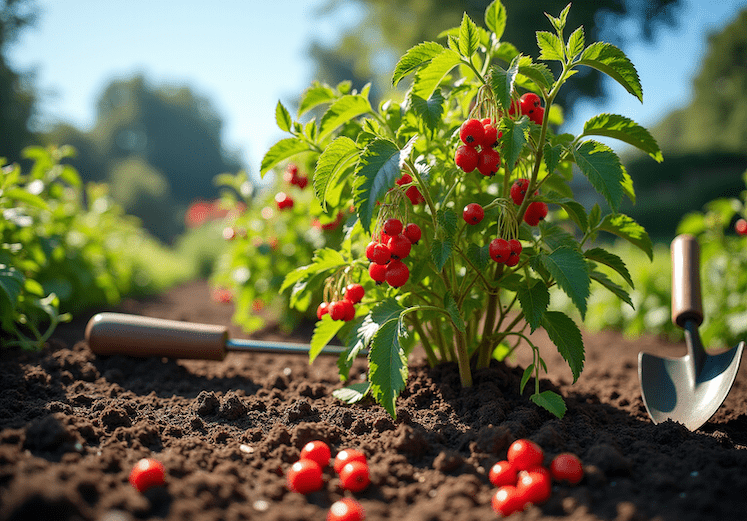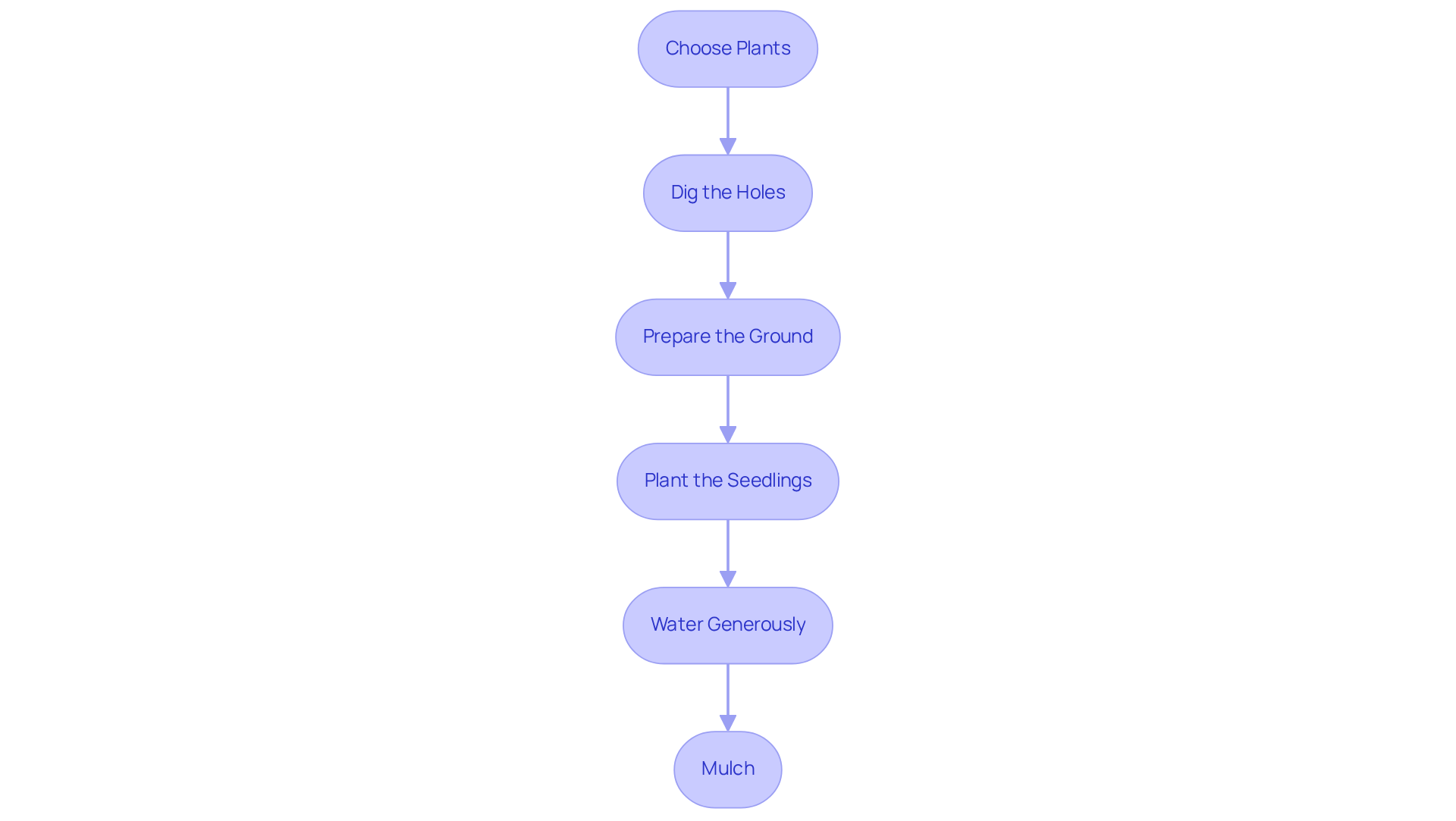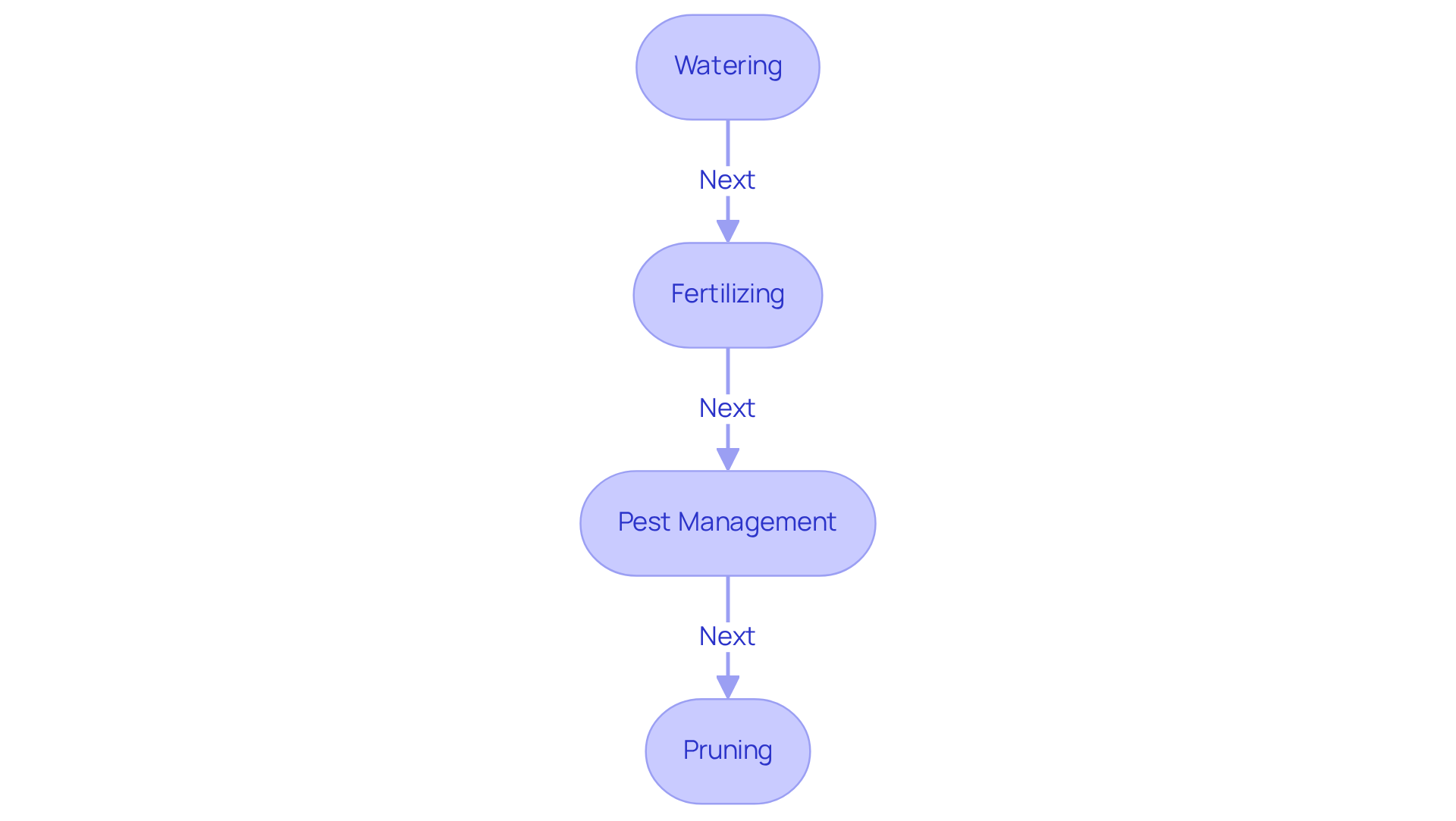
Grow Goji Berries: A Step-by-Step Guide for Home Gardeners
Share
Goji berries, often recognized as a superfood, are not only rich in nutrients but also add a vibrant touch to any home garden. Their remarkable adaptability and health benefits have garnered the interest of both gardening enthusiasts and health-conscious individuals. However, successfully growing goji berries can pose challenges, including soil preparation and pest management.
How can gardeners effectively navigate these hurdles to cultivate a thriving goji berry patch that yields delicious, health-boosting fruits?
Want to grow Goji Berries in your garden?
Explore Goji Berries for sale at Everglades Farm - shipped directly from Florida.
Understand Goji Berries: Characteristics and Benefits
Goji berries, also known as wolf fruits, are small red items celebrated for their impressive nutritional profile. They are exceptionally rich in vitamins A and C, providing over 250% of the daily value for Vitamin A in just 5 tablespoons (28 grams). Additionally, one ounce of dried red fruits offers more than 100% of your daily vitamin A requirements, making them a popular choice among health-conscious gardeners. Goji fruits are packed with antioxidants, including zeaxanthin and beta-carotene, with beta-carotene levels ranking among the highest of all consumable plants. Research suggests that daily consumption of goji berries may enhance overall well-being, with studies indicating benefits such as improved energy and mood in participants who consume goji juice.
These hardy fruits thrive in various environments, demonstrating impressive adaptability to dry spells and poor soil conditions. They prefer full sun and well-drained soil, making them suitable for a range of gardening settings. Moreover, goji berries have been traditionally used in Chinese medicine for their health-enhancing properties, including potential roles in regulating blood sugar levels and supporting eye health. It is important to note, however, that these fruits may interact with certain medications, particularly blood thinners, so consulting a healthcare professional is advisable. Incorporating goji berries, these small red fruits, into your home garden not only adds a vibrant touch but also offers numerous nutritional benefits, making them a valuable addition to any gardening enthusiast's collection.

Prepare Your Garden: Tools and Soil Requirements
To effectively grow these nutritious fruits, begin by gathering essential gardening equipment such as:
- A spade
- A trowel
- A watering can
Land preparation is crucial because goji berries thrive in well-drained soil that is slightly acidic to neutral, with a pH ranging from 5.5 to 6.0. To create optimal conditions, enrich your soil with organic matter like compost or well-rotted manure, which enhances both fertility and drainage. If your soil is overly acidic, incorporating lime can help raise the pH to the desired level.
Ensure that the planting area for goji berries receives at least 6-8 hours of sunlight each day, as goji berries flourish in full sun. Additionally, clear the planting area of weeds and debris to establish a tidy environment for your new greenery. Regular watering is vital for healthy growth, and utilizing the right tools will facilitate effective maintenance throughout the growing season.
As noted by Julio Perez, a Horticulture Agent for UF/IFAS Extension, "Unlock the potential of these superfruits for a healthier, more vibrant life." Keep in mind that these shrubs typically begin producing fruit when they reach 2 years of age, yielding approximately 2 to 6 pounds of fruit per shrub, making them a valuable addition to your garden.
Plant Goji Berries: Step-by-Step Planting Instructions
-
Choose your plants by starting with healthy goji berries seedlings or seeds from a reputable source. If you opt for seeds, start them indoors 6-8 weeks before the last frost to ensure a robust start.
-
Dig the Holes: For seedlings, dig holes that are twice as wide and deep as the root ball. Space the holes about 4-6 feet apart to allow for optimal growth and airflow, which is essential for preventing disease. Additionally, maintain 2 to 4 feet between plants within a row and 6 to 8 feet between rows when establishing multiple rows.
-
Prepare the Ground: Enhance ground fertility by mixing the extracted earth with compost. Goji berries thrive in slightly alkaline soil with a pH of 7 to 8, so consider testing your soil and amending it as necessary. Add a handful of this nutrient-rich mixture at the bottom of each hole to support healthy root development.
-
Plant the Seedlings: Carefully remove the seedlings from their pots, taking care not to damage the roots. Place them in the holes, ensuring the top of the root ball is level with the surrounding ground. Fill in around the roots with the prepared mixture, compacting it gently to eliminate air pockets.
-
Water Generously: After planting, water the seedlings deeply to help settle the soil around the roots. Provide 1-2 inches of water each week and maintain consistent moisture in the soil, avoiding excess wetness as the plants establish themselves.
-
Mulch: Apply a layer of organic mulch around the base of the plants to retain moisture, regulate soil temperature, and suppress weed growth. A depth of approximately 3 inches is recommended to create an optimal environment for your fruit plants.

Care for Your Goji Berries: Watering, Fertilizing, and Pest Management
To ensure your goji berries thrive, it is essential to adhere to the following care guidelines:
-
Watering: Regular watering is crucial, particularly during the first year. Aim for approximately 1 inch of water weekly, adjusting based on rainfall. Allow the soil to dry slightly between waterings to prevent root rot, as these shrubs prefer well-drained conditions. This practice not only supports healthy growth but also ensures the longevity of your plants.
-
Fertilizing: Begin fertilization in early spring with a balanced organic fertilizer, applying about 4 to 5 tablespoons of a 16-16-16 formula per 10 square feet. A second application in mid-summer can support ongoing growth. It is important to be cautious not to over-fertilize, as excess nitrogen can lead to lush foliage at the expense of fruit production, ultimately impacting your harvest.
-
Pest Management: Consistently observe your greenery for typical nuisances such as aphids and mites. Employ organic pest control methods, such as neem oil or insecticidal soap, to manage infestations effectively. Inspect the undersides of leaves and stems frequently for early signs of pest activity, as proactive measures can prevent larger outbreaks. Goji fruit mites can be effectively managed with agricultural soap, ensuring the health of your plants.
-
Pruning: Trim your fruiting shrubs in late winter to eliminate any dead or damaged branches and to shape the growth. This practice enhances air circulation and light penetration, which are vital for promoting healthy growth and maximizing fruit yield. In the second year, focus on forming a main trunk and removing spindly stems to encourage robust development. It is important to note that these shrubs do not require trimming in the first year, allowing for more fruits and stronger roots.
By adhering to these guidelines, you can nurture healthy shrubs that produce goji berries, enhancing a lively home garden. Furthermore, these small fruits are recognized for their health advantages, such as enhancing the immune system and promoting circulation, making them a valuable addition to your garden.

Troubleshoot Common Issues: Solutions for Healthy Growth
Even with the best care, these shrubs can face various challenges. Here are some common problems and effective solutions:
-
Powdery Mildew: This fungal disease appears as a white powdery coating on leaves, often thriving in humid conditions. To control powdery mildew, ensure good air circulation around the plants by spacing them adequately and pruning as necessary. Experts emphasize that good air circulation is crucial in preventing this disease. If the issue persists, applying a fungicide specifically designed for powdery mildew can help manage the outbreak.
-
Leaf drop in goji berries can occur due to inconsistent watering practices. Overwatering can lead to root decay, while underwatering stresses the plants. Regularly check the soil moisture, aiming for a balance that keeps the soil consistently moist but not soggy, ideally between 60% to 70% of field capacity. Adjust your watering schedule according to weather conditions and the growth phase of the plants. Blossom end rot can also be a concern, often linked to calcium deficiency and inconsistent watering, so maintaining a steady watering routine is essential.
-
Poor Fruit Production: If your shrub of the superfood is not yielding fruit, it may be due to inadequate sunlight or nutrient deficiencies. Ensure your plants receive at least 6-8 hours of direct sunlight each day. Additionally, proper fertilization with a balanced fertilizer can enhance fruiting. Pruning during the growing season can also redirect energy towards fruit production, improving yields.
-
Pest Infestations: Routine examinations of your fruiting crops are essential for early identification of pests like aphids and thrips. If an infestation is detected, treat it promptly using organic pest control methods, such as insecticidal soap or neem oil, to minimize damage and protect beneficial insects. Implementing companion planting strategies can also deter pests naturally.
By addressing these common issues with proactive measures, you can ensure the healthy growth and productivity of your goji berries.
Conclusion
Growing goji berries at home not only enhances the vibrancy of your garden but also offers a wealth of health benefits. Understanding the unique characteristics of these nutrient-packed fruits allows gardeners to appreciate their versatility and the positive impact they can have on overall well-being. With the right preparation and care, goji berries can thrive in various environments, providing both aesthetic pleasure and nutritional value.
This guide outlines essential steps, from preparing the garden and planting to ongoing care and troubleshooting common issues. Key points include:
- The importance of well-drained soil
- Adequate sunlight
- Consistent watering
- Organic pest management
By adhering to these practices, home gardeners can cultivate healthy goji berry plants that yield abundant fruit while reaping the rewards of their numerous health advantages.
Ultimately, the journey of growing goji berries transcends the end product; it embodies a sustainable gardening practice that nourishes both the body and the environment. By incorporating these superfruits into personal gardens, gardeners can contribute to their health and well-being while enjoying the satisfaction of nurturing their plants from seedling to harvest.
Transform Your Garden with Nutrient-Packed Goji Berries!
Start your journey to a healthier lifestyle and vibrant garden with Everglades Farm today.
Frequently Asked Questions
What are goji berries and their nutritional benefits?
Goji berries, also known as wolf fruits, are small red fruits that are highly nutritious, rich in vitamins A and C. They provide over 250% of the daily value for Vitamin A in just 5 tablespoons (28 grams) and more than 100% of daily vitamin A requirements in one ounce of dried fruit.
What antioxidants are found in goji berries?
Goji berries are packed with antioxidants, including zeaxanthin and beta-carotene, with beta-carotene levels being among the highest of all consumable plants.
What health benefits are associated with goji berries?
Research suggests that daily consumption of goji berries may enhance overall well-being, improving energy and mood, particularly in those who consume goji juice. They have also been traditionally used in Chinese medicine for regulating blood sugar levels and supporting eye health.
What are the growing conditions for goji berries?
Goji berries thrive in well-drained soil that is slightly acidic to neutral, with a pH ranging from 5.5 to 6.0. They prefer full sun and require at least 6-8 hours of sunlight each day.
What tools are needed to grow goji berries?
Essential gardening tools for growing goji berries include a spade, a trowel, and a watering can.
How should the soil be prepared for planting goji berries?
To prepare the soil, enrich it with organic matter like compost or well-rotted manure to enhance fertility and drainage. If the soil is overly acidic, lime can be added to raise the pH to the desired level.
How much fruit can be expected from goji berry shrubs?
Goji berry shrubs typically begin producing fruit when they reach 2 years of age, yielding approximately 2 to 6 pounds of fruit per shrub.
Are there any precautions to consider when consuming goji berries?
Goji berries may interact with certain medications, particularly blood thinners, so it is advisable to consult a healthcare professional before incorporating them into your diet.


